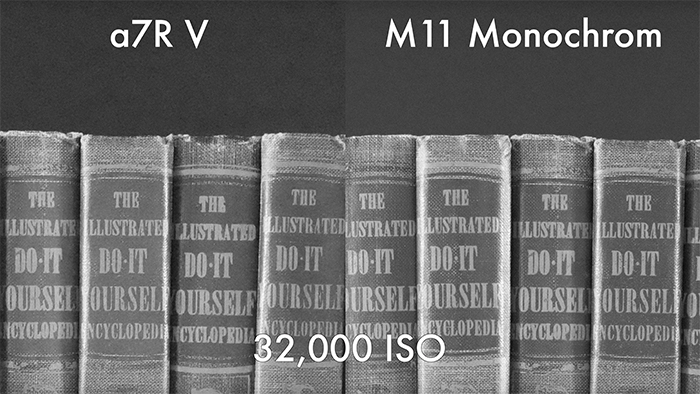Northrup: Which Sony Camera should you buy? $750 to $6000!
I am like Chelsea and I want them all :)
I am like Chelsea and I want them all :)
His reasoning is simple: Why spend a lot of money on new expensive Sony cameras that won’t get updated when it’s better to wait for the following cheaper models that will have even better features.
Sony ambassador Colby Brown gave this answer to the video:
Here is my take…
Can Sony be more transparent about updates? Sure…all manufacturers can do better here!
Would I like an update to the a1? Absolutely, every user wants their gear to get new features.
Is the a1 still the best camera in the market for my needs doing wildlife, landscape, travel and Astro? Absolutely. I can’t think of a situation the a1 hasn’t been able to handle on all my projects around the globe.
Will those people complaining in the YouTube comments of that video jump at the first chance to buy the a2 when it comes out and once again blows away the competition? Of course they will…
The Internet thrives on complaints…not on people actually sharing the successes they have had with the gear they use.
Feel free to add your two cents on this interesting debate!
Sigma 85mm lens at BHphoto, Amazon, Adorama, FocusCamera. Calumet DE, Amazon DE, Amazon UK.
Opticallimits reviewed the new Sigma lens and concluded:
The Sigma 85mm f/1.4 DN DG ART didn’t receive too much attention out there, which is a bit strange in our book – it is among the best 85mm lenses that we have tested so far. It is plenty sharp at f/1.4 and only gets better when stopped down a little bit. The peak quality around f/4 is nothing short of outstanding. Image distortions are visible in RAW files but easily auto-corrected. The RAW vignetting is typical for a lens in this class – and, once again, there’s little to worry about with auto-correction. Lateral CAs are marginal. Conversely, axial CAs are clearly visible in critical scenes at f/1.4 and f/2. However, keep in mind that this isn’t unusual among ultra-fast lenses. The quality of the bokeh is good in the critical image background, with some nervousness in the foreground. Bokeh highlights are nicely rendered, but you’ll have to live with cat eyes near the edges. It’s a non-issue for photography, but videographers may not like that the lens exhibits pronounced focus breathing.
The build quality is exceptionally high and on the level of professional OEM lenses – other than the rather wobbly front cap. It’s also dust- and splash resistant. The Sigma lens is also surprisingly lightweight and compact for a lens of its class. The dedicated aperture ring offers a de-clicked mode, and you can customize the AF-lock button via the camera. The AF is both quite speedy and noiseless, with the usual caveat that this is heavily dependent on the camera as well.
Overall, the Sigma 85mm f/1.4 DN DG ART is a winner, and it deserves our highest praise – “Highly Recommended”.

The new Leica M11 Monochrom camera uses exactly the same Sony A7rV sensor with stripped RGB filter (the sensor is listed on Sony’s sensor page). PetaPixel tested the M11 and the result is quite clear: the M11 gives 1 stop advantage and visible increased sharpness compared to the classic Bayer sensor!
I do believe Sony should make a Sony A7rV monochrome version for those reasons:
What do you think?
From minute 44 you can hear why Chris loves the A7rV and believes it’s the best camera to buy!
As much as Sony can frustrate when it comes to lack of firmware update support, I know why I bought the A7rV myself: It is the best camera for my kind of photography and I am super happy with it!
Sony A7rV store links:
In US at BHphoto, Amazon, Adorama, FocusCamera, BeachCamera, Buydig.
In EU at Fotokoch, Amazon EU, FotoErhardt, Calumet DE, WexUK. ParkCameras UK.
In Australia at CameraPro, Camerahouse, Sony.